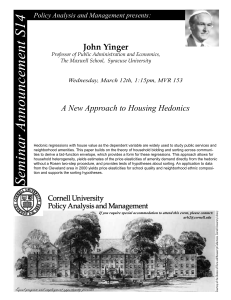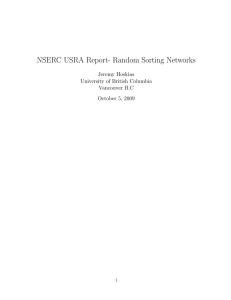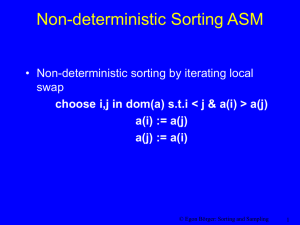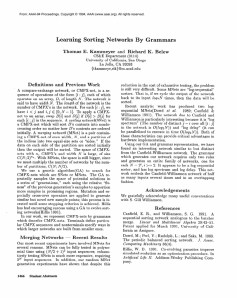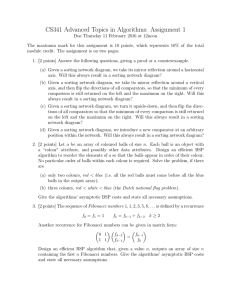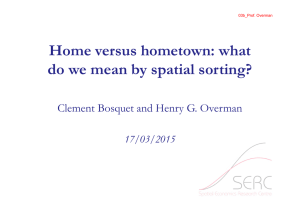COMBINATORICS SEMINAR RANDOM SORTING NETWORKS
advertisement
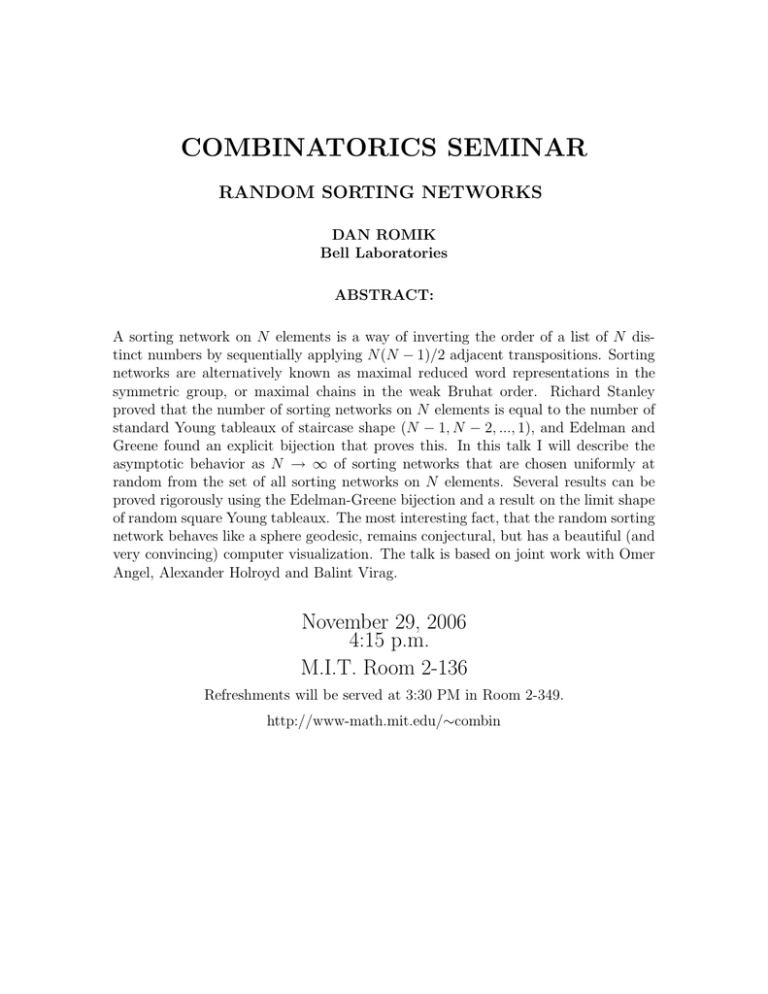
COMBINATORICS SEMINAR RANDOM SORTING NETWORKS DAN ROMIK Bell Laboratories ABSTRACT: A sorting network on N elements is a way of inverting the order of a list of N distinct numbers by sequentially applying N(N − 1)/2 adjacent transpositions. Sorting networks are alternatively known as maximal reduced word representations in the symmetric group, or maximal chains in the weak Bruhat order. Richard Stanley proved that the number of sorting networks on N elements is equal to the number of standard Young tableaux of staircase shape (N − 1, N − 2, ..., 1), and Edelman and Greene found an explicit bijection that proves this. In this talk I will describe the asymptotic behavior as N → ∞ of sorting networks that are chosen uniformly at random from the set of all sorting networks on N elements. Several results can be proved rigorously using the Edelman-Greene bijection and a result on the limit shape of random square Young tableaux. The most interesting fact, that the random sorting network behaves like a sphere geodesic, remains conjectural, but has a beautiful (and very convincing) computer visualization. The talk is based on joint work with Omer Angel, Alexander Holroyd and Balint Virag. November 29, 2006 4:15 p.m. M.I.T. Room 2-136 Refreshments will be served at 3:30 PM in Room 2-349. http://www-math.mit.edu/∼combin


